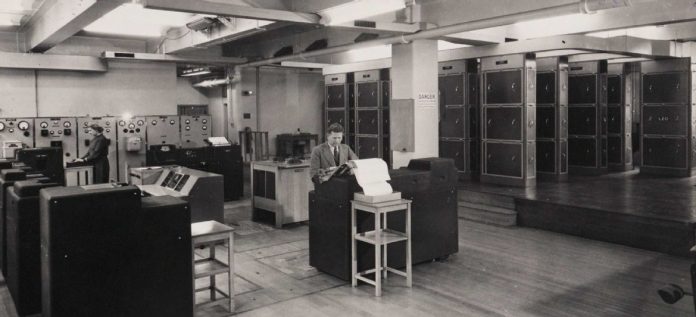Computers and technology are something that we take for granted nowadays. They are so integrated in our daily lives that the fear of solar flares causing our satellites and computers systems to go down is actually a real worry for a lot of people.
Young people of today probably can’t conceive or a time when we didn’t have computers unless it is somewhere in the very distant past like knights on horseback, but the truth is, computers as we know them today haven’t been around all that long.
It was only during World War 2, less than a hundred years ago, that the first digital computers were used for calculating big gun and missile trajectories accurately, amongst other things, now a Raspberry Pi is more powerful ten fold.
However, it took until 1951 for the first public business computer to walk onto the world stage and it came from the most unlikely of sources.
If you asked 100 people which company they thought brought us the first business computer, it’s a fairly safe bet that the answers you’d receive would be big tech companies like IBM, Apple, Microsoft, and Dell, and they would all be very reasonable assumptions.
The truth of the matter is though, that ‘LEO’ (the name given to what we regard as the first computer) was actually developed by a British catering company called J. Lyons & Co. who were famous for having chains of tea shops across the country.
In addition to their tea shops, the company also operated bakeries, ran hotels, provided catering for major events including Royal ones, and also packing factories.
To handle this varied and complex organisation took some serious management personnel, and J. Lyons & Co. made sure that they had the right people for the job, earning them a reputation as forward thinking employers.
One such personnel acquisition was a Cambridge educated mathematician called John Simmons who, after proving his worth by upgrading many of the company’s existing systems and procedures, set up a specific research department with the intention of creating and developing the next generation of business ideas and methods.
It was from this department, years later in 1947 that two trainee managers were sent overseas to the United States to look into the business practices used there.
They returned without any real new ideas except for one that had caught their attention- the use of electronic digital computers to crunch large numbers. This was something that would certainly help an organisation the size of J. Lyons who could use it to monitor outputs at their bakeries and factories, and also business transactions.
After getting permission from the company’s boardroom, Simmons made a deal with Maurice Wilkes from Cambridge University who would let J. Lyons & Co. copy their EDSAC computer that they were working on in exchange for funding ongoing research.
A team of top engineers were tasked with adapting the EDSAC computer into a business orientated machine and in 1951 they successfully created a business application, the world’s first.
Consequently J. Lyons & Co. established LEO computers in 1954 and began offering services to many large businesses and organisations.
After this, the company developed LEO 2 , an upgrade on the first model with some important design features. Leo 2 computers found their way into the main office buildings of various world leading companies and the information age was officially born.
Models following the second generation LEO computer were the LEO 3, then later, when LEO computers became part of the English Electric Company, they produced the LEO 360 and LEO 326 models which were considerably faster.
So, there you have it, the birth of the first business computer. From there we have incredible innovation such as cloud computer services through to 5G lightening fast internet as well as incredible database technologies a well as youtube mp3 downloaders that have sprung from the hardware movement and even more surprising the cyber attacks and ssl vulnerabilities that now plague computers.
The next time you look adoringly at your latest smartphone like an iPhone 11 Max, and you use VoIP, you can tell it-
“You know, your great, great grandfather used to count cakes for a living”

